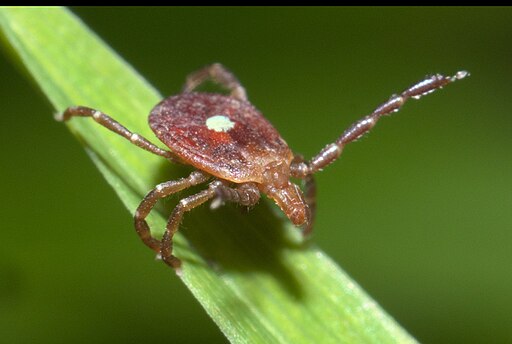What is Alpha-gal Syndrome?
By: Archiradhi Communications
- Introduction
- Alpha-gal syndrome: Overview
- The foods and items that contain alpha-gal
- Who is at risk of getting alpha-gal syndrome?
- Diverse symptoms: From mild to life-threatening
- Beyond the usual: Unexpected sources of alpha-gel
- The instigators of alpha-gal syndrome
- Diagnostic challenges and solutions
- Managing alpha-gal syndrome: Navigating treatment options
- Navigating alpha-gal syndrome: Dietary and lifestyle adjustments
- Staying safe from ticks
- Call for action
- Conclusion
Introduction
Two recent publications in 2023 by the US Centers for Disease Control and Prevention (CDC) shed light on an enigmatic condition known as Alpha-Gal Syndrome (AGS).
Also known as 'red meat allergy' amongst other sobriquets, AGS stands out for its connection between tick bites and the subsequent development of allergies to red meats and other mammalian products.
This condition arises from the body’s immune response to alpha-gal, a sugar molecule found in meats like beef, pork, and venison, as well as items derived from mammals like cow’s milk and gelatin.
The CDC studies underscore the diagnostic challenges and clinical implications of AGS. They highlight the importance of early detection and proactive management strategies for those affected by this disease.
Alpha-gal syndrome: The intricate link between tick bites and red meat allergy
Overview
Alpha-gal syndrome (AGS) is a puzzling, but potentially life-threatening, allergic condition that goes by various names such as 'red meat allergy', 'tick bite meat allergy', and 'mammalian meat allergy'.
It results from an allergic response to alpha-gal, a sugar molecule that is present in red meats like beef, pork, lamb, and venison. The molecule is also present in various mammalian products like cow’s milk and gelatin.

Red Meats
What makes this condition puzzling is that the allergic reaction begins after a person has been bitten by a tick.
The tick first feeds on a mammal and consumes alpha-gal. When this tick bites a human, it injects the previously ingested alpha-gal into the person’s bloodstream. The sugar molecule triggers the immune system to respond. This will ultimately result in the person developing an allergy to red meat and other products containing alpha-gal.
The foods and items that contain alpha-gal.
The alpha-gal sugar molecule can be found in:
- Red Meat: This includes beef, pork, lamb, goat, and venison.
- Products derived from mammals: Items derived from mammals, including gelatin, cow’s milk, lard, cream and cheese.
- Medications: Even medications can contain alpha-gal. For example, the cancer drug cetuximab contains this sugar molecule. Interestingly, it was during initial clinical trials with cetuximab that some participants developed unusual allergic reactions. Further research led to the identification of AGS in 2009.
Who is at risk of getting alpha-gal syndrome?
Beyond the obvious fact that anyone spending time in tick-infested areas can develop AGS, even those who breathe in fumes from cooking mammalian meat can be affected. In general, most cases of AGS are observed in adults.
Diverse symptoms: From mild to life-threatening
The symptoms of AGS can vary widely, ranging from discomfort to potentially life-threatening reactions.
Some symptoms include skin reactions like hives, itchy skin, and angioedema (swelling that affects the lips, throat, face, tongue, and eyelids).
Others may experience gastrointestinal problems like diarrhea, nausea, heartburn, or indigestion. These could be part of the overall symptoms or isolated issues.
Breathing problems like coughing and wheezing can also occur. Of serious concern is anaphylaxis, which involves multiple organ systems and requires immediate medical care.
Symptoms tend to become noticeable around 2 to 6 hours after consumption of red meat or specific dairy products. However, there are scenarios where symptoms are immediate. For instance, when a person comes in contact with medications containing this specific sugar.
Beyond the usual: Unexpected sources of alpha-gel
Alpha-gal is not just limited to items like red meats and products derived from red meats. It can be found in some types of antivenom, vaccines, and even heart valves made from cows and pigs. Furthermore, carrageenan, a natural substance obtained from red seaweeds contains a type of alpha-gal. Carrageenan is a common food additive used in beers, salad dressings, and so on.
The instigators of alpha-gal syndrome.
Different types of ticks are instigators of AGS in various parts of the world. In the United States, it is primarily the lone star tick and the black-legged tick. In Asia, it is the Asian longhorned tick, while the Cayenne tick is responsible for AGS in Central America.

Lone star tick
Diagnostic challenges and solutions
Detecting AGS can be tricky. Tick bites are often painless, and allergic reactions to alpha-gal are usually delayed by three to six hours after eating a meal containing red meat.
Also, many healthcare practitioners are unfamiliar with this condition. This fact was highlighted in the two clinical studies published by the CDC.
To diagnose AGS, the physician or allergist needs to closely examine the patient’s symptoms and history, and conduct a thorough physical examination.
Specialized allergy tests are used. They include a blood test to identify immunoglobulin-E antibodies that are specific for alpha-gal. Additionally, a skin prick test to gauge the body’s response to allergens may be required.
Anyone suspecting a tick bite/AGS should reach out to their healthcare provider at the earliest. Early detection enables individuals to steer clear of triggers and mitigate the risk of complications.
Managing alpha-gal syndrome: Navigating treatment options
There is no cure for alpha-gal syndrome at the moment, but early detection is beneficial. With early detection healthcare providers can develop personalized management strategies for their patients.
Treatment typically involves avoidance of foods containing alpha-gal and the use of medications to manage symptoms that may arise from accidental exposure.
Navigating alpha-gal syndrome: Dietary and lifestyle adjustments
For individuals affected by alpha-gal syndrome, dietary and lifestyle modifications are crucial.
They need to avoid red meats and products made from red meat. In addition to these measures, they need to be aware of other potential triggers. These could be such innocuous items like personal care items and medications.
Staying safe from ticks
The saying 'Prevention is better than cure' is especially true with alpha-gal syndrome. Effective guidelines are available online for individuals to protect themselves from getting bitten by ticks.
The first step is to understand where ticks commonly reside and avoid coming in contact with them. Staying on designated trails within wooded or grassy areas can significantly reduce risk of tick exposure.
Wear the right types of clothes like long-sleeved attire and use insect repellents. Also, ensure to thoroughly check for ticks after an outdoor activity. This includes self-examination as well as checks on pets. In case a tick is discovered, carefully remove it using tweezers. Avoid crushing the tick during removal, and make sure to apply antiseptic to the area.
Call for action
If someone suspects that they might have alpha-gal syndrome, it is important to reach out to a healthcare provider for early detection and guidance to avoid potentially serious consequences.
For individuals already living with the syndrome, it’s crucial to be mindful of their diet and cautious about items that may contain alpha-gal sugar.
Stay informed, practice self-care, and take preventive measures against tick bites.
Conclusion
Alpha-gal syndrome is a perplexing and potentially life-threatening allergic condition. It has garnered attention because of its unique connection between tick bites and the development of allergies to red meats and specific mammalian-based products.
This condition is characterized by pronounced jaundice, weight loss, diarrhea, pruritus, and fever. However, the resolution is spontaneous in most cases.
The symptoms of alpha-gal syndrome can range from mild discomfort to potentially life-threatening reactions like anaphylaxis.
Identification of AGS is challenging due to the delayed reactions and limited awareness amongst both the public and healthcare practitioners. Although there is no cure at present, early detection enables personalized treatment strategies to mitigate the symptoms.
Overall, alpha-gal syndrome is a special medical condition that highlights the intricate interplay between ticks, immunity, and dietary choices.
Please Note
Archiradhi Communications provides this information as a helpful resource for our readers. However, this information is not medical advice.
If you have any specific health concerns or symptoms, we strongly recommend seeking the guidance of a healthcare practitioner. They are the best qualified to evaluate your situation and provide personalized advice.



